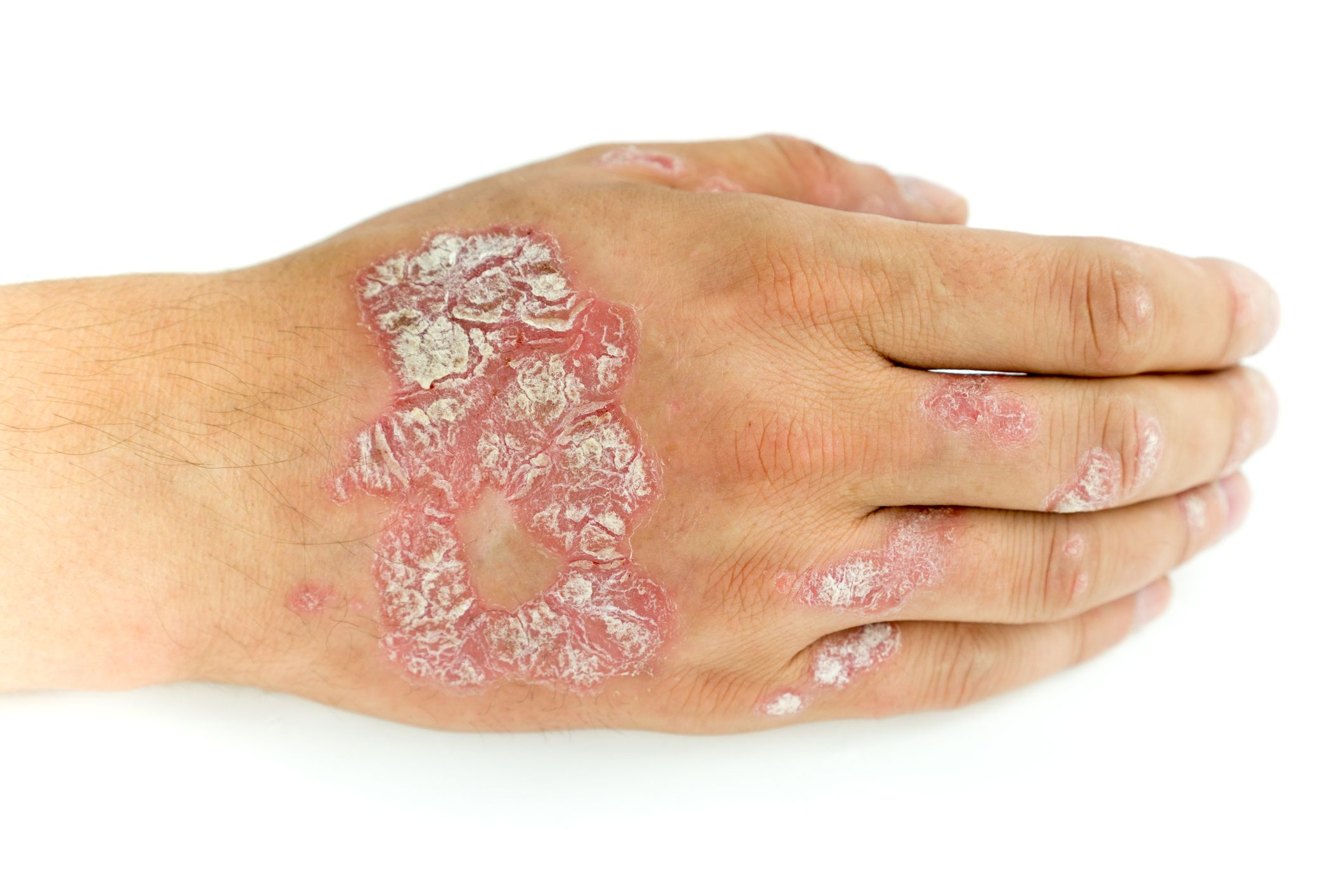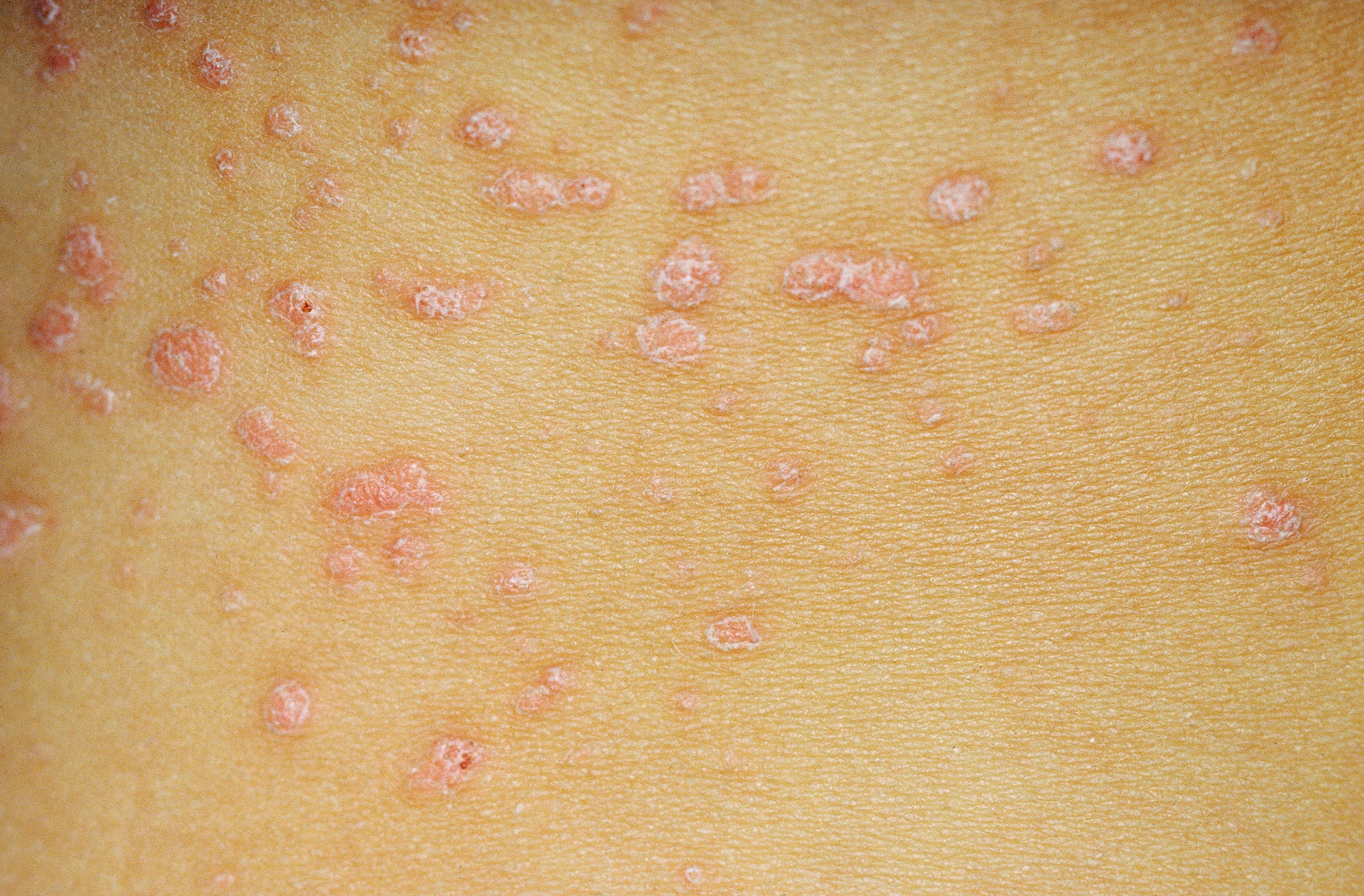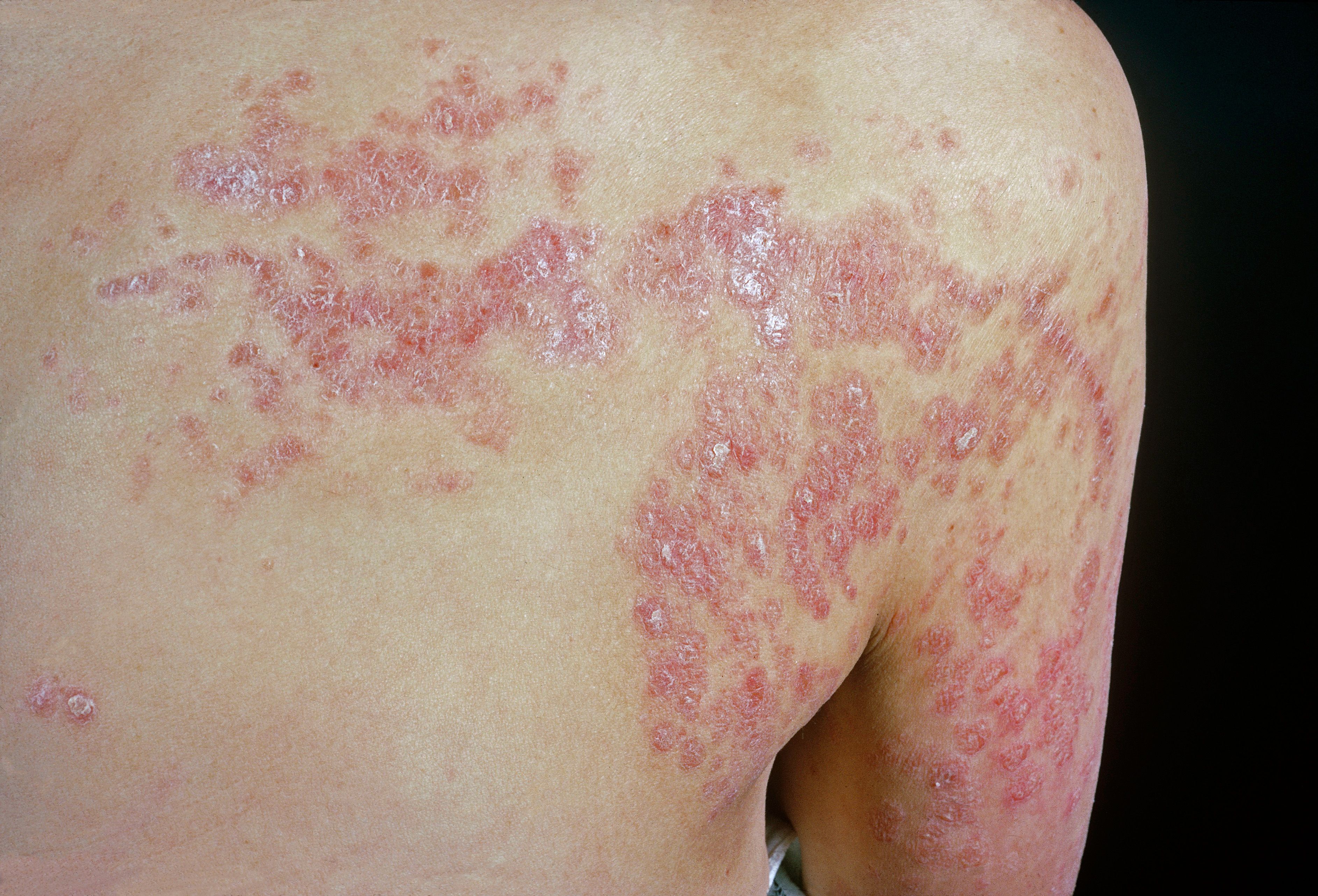We all get rashes from time to time from exposure to additives, certain metals, plants, and allergens. But what if your rash just doesn't go away-and is also inflamed, growing scales, and so itchy you can barely sleep? You might have psoriasis.
Psoriasis is a skin condition that can take five different forms: plaque, gutatte, inverse, pustular, and erythrodermic. Some forms are more common than others and some are more severe than others. They can have different causes, symptoms, and treatments.
If you think that you have psoriasis, discover which type you might have and then make an appointment with a dermatologist (a doctor who specialises in treating the skin) to get a physical exam.
Plaque psoriasis

Plaque psoriasis is the most common type of psoriasis. Look for reddish-pinkish, raised skin lesions (called plaques) that are topped with silvery scales. They might be itchy or sore, and if you scratch them, you may notice pinpoint bleeding.
These plaques can occur anywhere on the body, but some of the areas where they most commonly appear include the elbows, the knees, the lower back, and the scalp. The size of the patches and how much body surface area they cover can vary widely. Patients with plaque psoriasis may also experience nail problems, such as pitted or discoloured nails, or nails that fall off.
Plaque psoriasis treatment might include topicals, oral medications, light or laser therapy, or the newest type of treatment: biologic therapy. Which type of treatment you receive may depend on many factors, like the severity of the psoriasis, your lifestyle, your insurance, what other medical conditions you have, and what medications you're already taking.
Guttate psoriasis

Guttate psoriasis is the second-most common type of psoriasis, after plaque psoriasis.
Guttate psoriasis is characterised by small, reddish sores that appear most commonly on the arms, legs, and trunk. The body looks dotted. The lesions tend to have silvery scales on top, but they're generally thinner than plaque psoriasis patches.
This type of psoriasis is more common in children and young adults and is often triggered by a bacterial infection like strep throat. Sometimes treating the strep throat with an antibiotic makes the guttate psoriasis disappear. Some people get guttate psoriasis only once while others get it over and over again. Some get guttate psoriasis and then go on to develop plaque psoriasis.
"There are a few other conditions that can mimic guttate psoriasis. There's pityriasis rosea and secondary syphilis, for example. So sometimes we'll do a biopsy or send patients for blood work to confirm the diagnosis," says dermatologist Dr Rhonda Q. Klein. "We'll often treat it with a topical steroid. If it's bad, sometimes we'll do a light box for a short period, or if it's really bad, sometimes we'll do an oral medication like cyclosporine just to shut it down." For patients who repeatedly get strep throat infections, getting a tonsillectomy (surgically removing the tonsils) can be helpful because that makes it a lot harder to get strep throat.
Inverse psoriasis
Inverse psoriasis tends to occur on areas of the body where skin touches other skin, like in the armpits, the groin and genital area, behind the knees, between the buttocks, and under the breasts. With inverse psoriasis, patches are red, inflamed, shiny, and smooth (no silvery scales) and they usually feel sore.
"Inverse psoriasis is more common in people who are overweight and it tends to get worse in the summer when it's hot and people sweat more. The skin folds are moist areas and often there's some fungus or yeast there," says Dr Klein. "We'll often treat it with a combination of a topical steroid cream at night and an antifungal powder during the day to keep it dry. You can't use the cream and the powder together or it'll create a nasty paste."
Pustular psoriasis

"Pustular psoriasis is pretty rare and occurs mostly in adults," says Dr Klein. Sometimes pustular psoriasis appears as patches in small areas like on your hands or feet, and other times, it covers a larger area of skin. The skin becomes red and tender and then tiny blisters filled with white pus form on top of that red skin.
It can come on fast and the blisters can feel sore and painful. The blisters may go away after a few days, but they can come back. Pustular psoriasis can be caused by many things including infections, the sudden withdrawal of certain medications, pregnancy, overexposure to UV light, or emotional stress. If the pustular psoriasis covers a large portion of the body, the patient may experience systemic symptoms like fever, chills, muscle weakness, fatigue, loss of appetite, rapid pulse, and itchiness.
"With treatment for pustular psoriasis, you usually need to start with something systemic-maybe an oral medication like cyclosporine-and treat it a little more aggressively than the other types because it can have systemic symptoms and because it can lower your levels of calcium and albumin (a protein made by your liver). You may also need nutritional supplementation," says Dr Klein. And if the cause is an infection or a medication, for instance, a dermatologist may need to address those underlying issues.
Erythrodermic psoriasis
Erythrodermic psoriasis is the least common form of psoriasis, occurring in only 3 percent of people who have psoriasis during their lifetim. It's also the most severe form of psoriasis.
With erythrodermic psoriasis, more than 75 percent of the body becomes covered with a red rash that peels off in sheets, intensely itches, and feels extremely hot and painful. The skin looks like it's been burned, and if you think that you might have this type of psoriasis, go to a hospital right away for treatment because it can be life threatening. Erythrodermic psoriasis makes it hard for the patient to maintain a normal body temperature of 37 degrees celcius, so the patient may feel very cold or very hot. "And your heart rate can go up and you can get a fever," says Dr Klein.
Some common causes include getting a bad sunburn, having another type of psoriasis, and taking a corticosteroid or another medication. "The causes of erythrodermic psoriasis are similar to the causes of pustular psoriasis and we treat it similarly, usually with the oral medication cyclosporine. In fact, pustular can sometimes turn into erythrodermic," says Dr Klein.
The good news is, no matter which type of psoriasis you have, with treatment, most psoriasis patients are able to find significant relief
(Want to pick up some healthier habits? Sign up for FREE to get healthy living tips, weight loss inspiration, slimming recipes and more delivered straight to your inbox!)





.png&h=193&w=250&c=1&s=1)
.png&h=193&w=250&c=1&s=1)


